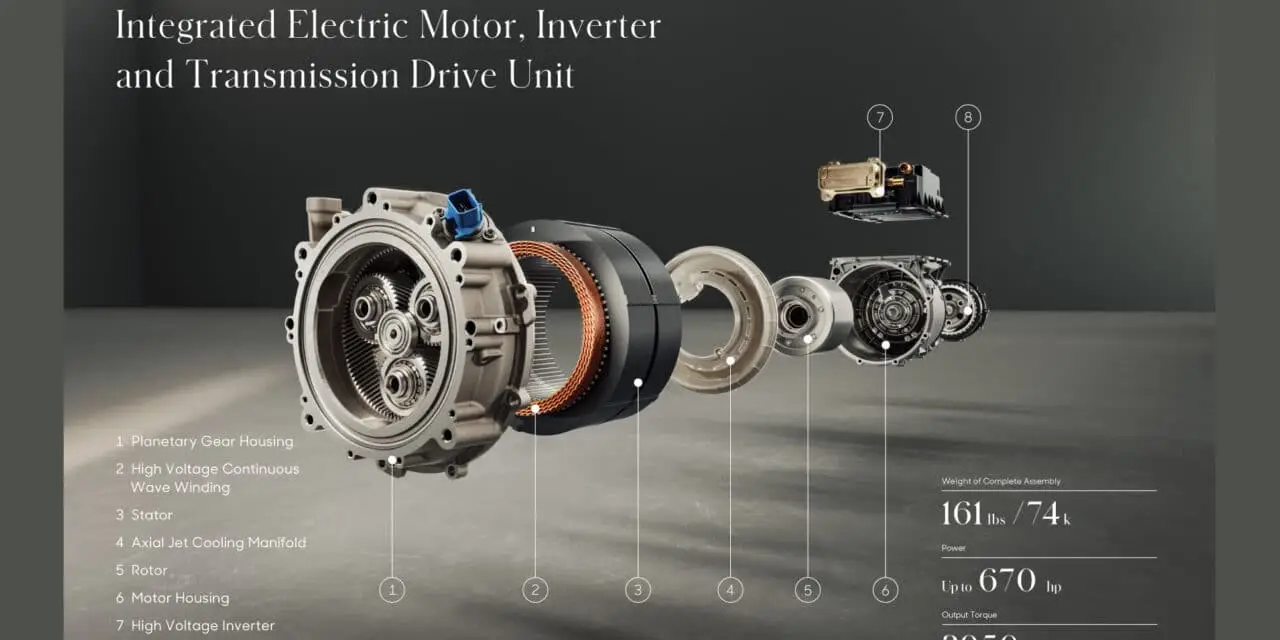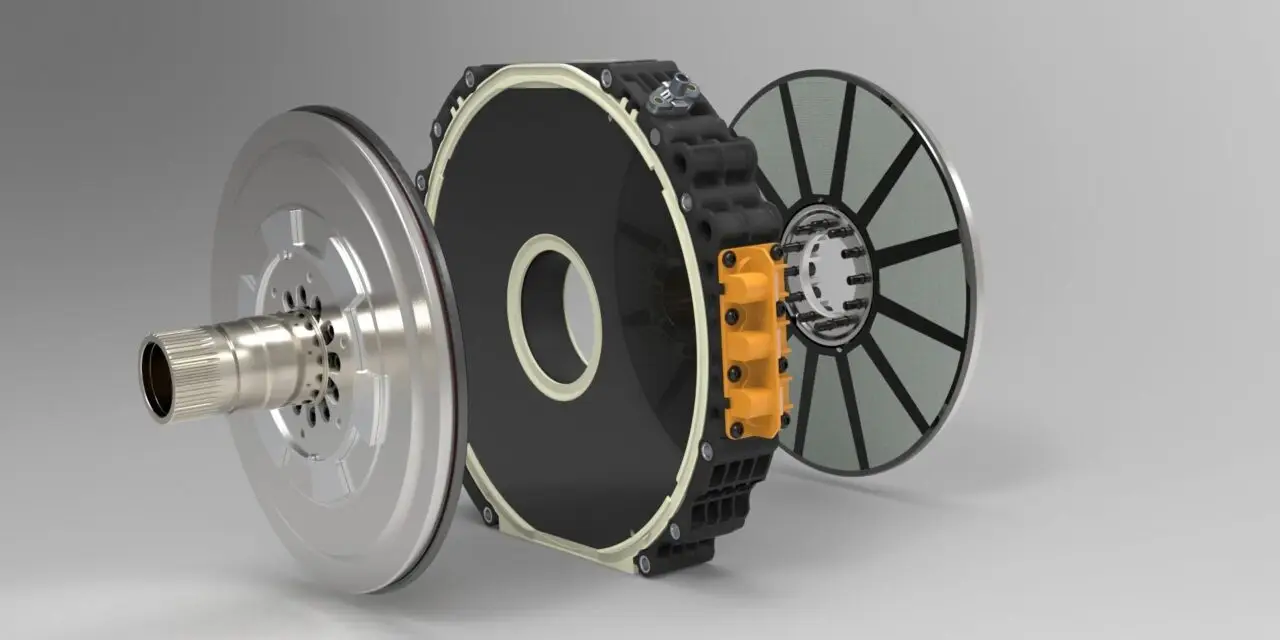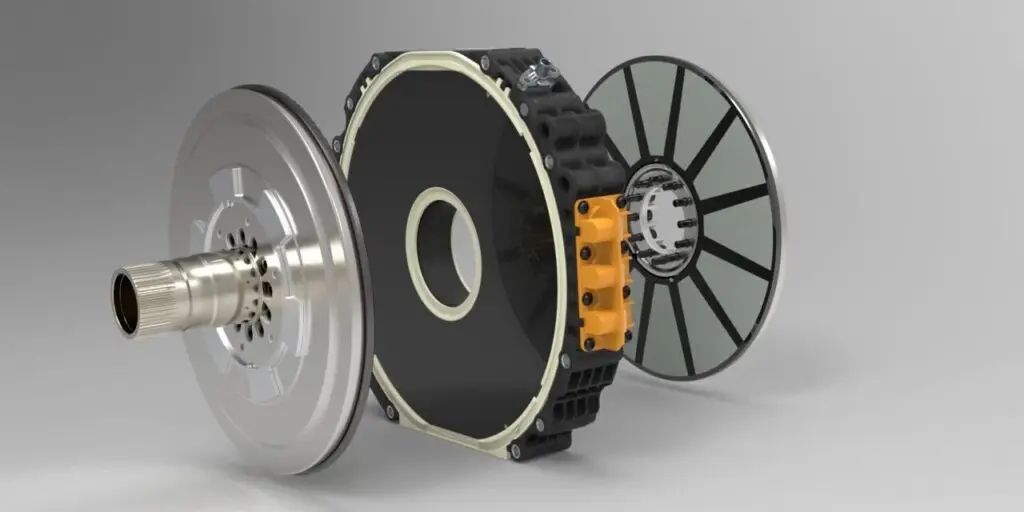Strategy Analytics report highlights increasing integration of EV electric motors
Posted by Kevin Jost



Electric motors in electric vehicles are increasingly being integrated with the inverter and transmission, while new technology concepts, such as axial flux and switched reluctance are being explored to raise efficiency and performance. These are some of the developments covered in the Strategy Analytics’ Electric Vehicle Service (EVS) report “Electric Vehicle Motors: Auto Makers Deploy Integrated E-Axles While Exploring New Technologies.”
“As automakers adjust their businesses to become ‘all-electric,’ they are increasingly looking into integrating their electric motors with other components to form ‘e-axles’ to raise production efficiency and lower production cost, which enables them to use new flexible and modular vehicle platforms,” said Kevin Mak, report author and Principal Analyst in the Global Automotive Practice (GAP) at Strategy Analytics, now part of TechInsights. “But the increase in competition among automakers will also see further exploration of motor concepts, such as axial flux motors by the likes of Mercedes-Benz and Renault, 800-V motors, and denser coil windings in the stator. Some are also limiting the use of costly rare earth materials used in electric motor magnets through induction motors and externally excited synchronous motors. Production of electric motors has also swung in-house and back out to Tier 1 suppliers again, as the market becomes more commoditized.”
The new report updates developments in battery management and power electronics from an earlier Strategy Analytics report on OEM hybrid and electric vehicle strategies published in November 2021. Penetration for electrification and stop-start systems is expected to increase from 63.8% in 2021 to 96.1% by 2029. Demand for all hybrid vehicles will equate to 19.2% of global powertrain volumes and 19.7 million units by 2029. Demand for battery electric vehicles will reach 34.5 million units by 2029, an equivalent to 33.8% of global powertrain demand.
The Strategy Analytics forecast reflects increasingly positive battery electric vehicle sentiment compared to the forecast in previous reports. With the mandates to ban the sale of combustion engine-powered new light vehicles coming to effect in many countries in the 2030 to 2040 timeframe, the demand emphasis will be on battery electric powertrains. Fuel-cell powertrains will remain a costly niche reserved for long-distance and heavy-duty fleets.
As a result of this growth in electrified powertrains, value demand for electric motors will also grow rapidly from $7.0 billion in 2021 to nearly $26.0 billion in 2026, for a cumulative annual average growth rate of 30%, and to $39.6 billion by 2029.
Among the electric-motor developments covered in the report are the reduction strategies to limit the use of costly rare earth materials that have been dominated by Chinese suppliers.
The integration of electric motors with transmissions and inverters to form e-axle modules enables vendors to reduce size, weight, and cost of electric drives, and it supports economies of scale and enables modularity in electric vehicle designs. Some integration has gone further to include the DC/DC converter and onboard charger.
While the permanent magnet synchronous motor is the most common motor type used in electric vehicles, alternative motor technologies have been explored to raise power density performance and efficiency, realize more space in the electric vehicles, and lower cost. Other developments include the use of cooling, increasing the poles or phases, using more dense stator windings, more sophisticated software control, and sealants to raise performance.
Higher voltages of 800-900 V systems are being introduced by some automakers to realize the benefits of weight reduction, faster charging times, and increased vehicle performance from increased motor performance.
Among the more impressive leading-edge electric motor solutions we’ve covered here at Futurride is Lucid’s in-house development of the powerful, compact, and ultra-efficient permanent magnet electric motor in the company’s Air electric luxury sedan (see lead image).
The company combines the motor with an inverter and integrated transmission and differential to create a 900 V+ electric drive unit that weighs just 163 lb (74 kg) and is small enough to fit inside a standard airline carry-on roller bag. The unit’s compactness allows for one, two, or three units to be used to power the Air. With each drive unit packing over 485 kW, with a class-leading power density of 30 kW/L, the company claims it is two and a half times more volumetrically compact than the closest competitor. In total, Lucid’s drive units are 45% lighter and up to 59% more powerful than the closest competitor. Also notable is that the motors can spin up to 20,000 rpm.
According to the Strategy Analytics report, more vendors will enter the electric vehicle motors market as demand for electrified powertrains grows and as some automakers increasingly revert electric motor supply back to Tier 1 vendors. Some of the supplier innovators and innovations called out in the report are Cyclopic, Equipmake, Linear Labs’ Hunstable Electric Turbine, Hitachi Astemo’s Direct-Drive System, and Infinitum Electric’s Air-Core motor.

Lucid’s integrates electric motor, invertor, and transmission in class-leading Pure Flux power unit.

Mercedes-Benz is expanding its electric product portfolio to include assembly of YASA axial-flux electric motors.

Renault Group says it will be the first OEM to produce axial flux e-motors on a large scale from 2025.